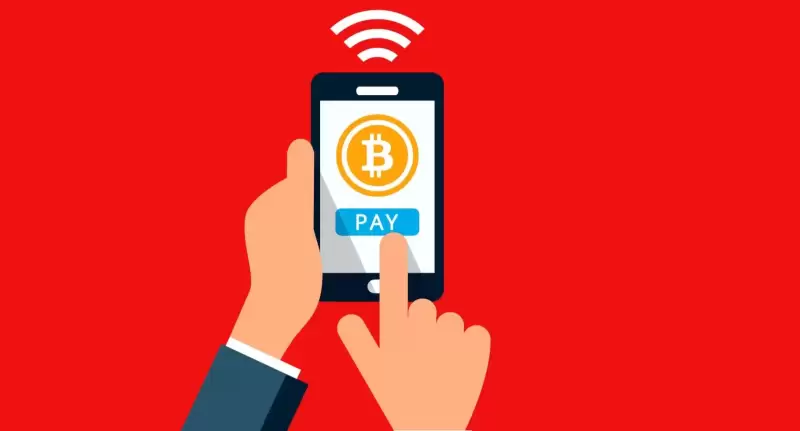 |
|
 |
|
 |
|
 |
|
 |
|
 |
|
 |
|
 |
|
 |
|
 |
|
 |
|
 |
|
 |
|
 |
|
 |
|
Cryptocurrency News Articles
The next challenge in crypto: Liquidity fragmentation
Apr 19, 2025 at 11:13 pm
Crypto has come a long way in boosting transaction throughput. New layer 1s (L1s) and side networks offer faster, cheaper transactions than ever before.
Crypto has come a long way in boosting transaction throughput. New layer 1s (L1s) and side networks offer faster, cheaper transactions than ever before. Yet, a core challenge has come into focus: liquidity fragmentation — the scattering of capital and users across an ever-growing maze of blockchains.
In a recent blog post, Vitalik Buterin highlighted how scaling successes have led to unforeseen coordination challenges. With so many chains and so much value splintered among them, participants face a daily tangle of bridging, swapping and wallet-switching.
While these issues affect Ethereum, they also affect nearly every ecosystem. No matter how advanced, new blockchains risk becoming liquidity “islands” that struggle to connect with one another.
The real costs of fragmentation
Liquidity fragmentation means there is no single “pool” of assets for traders, investors or decentralized finance (DeFi) applications to tap into. Instead, each blockchain or side network hosts its own siloed liquidity. For a user who wants to buy a token or access a specific lending platform, this siloing introduces multiple headaches.
Switching networks, opening specialized wallets and paying multiple transaction fees are far from seamless, especially for those less tech-savvy. Liquidity is also thinner in each isolated pool, leading to price disparities and higher slippage on trades.
Many users resort to bridges to move capital across chains, yet these have been frequent targets for exploits, raising fear and mistrust. If it’s too cumbersome or risky to move liquidity around, DeFi fails to gain mainstream momentum.
Recently: What are exit liquidity traps — and how to detect them before it is too late
Buterin also notes that optimism about new, heterogeneous layer-2 (L2) solutions might be placing too little emphasis on the integration of these solutions with the broader Ethereum ecosystem. Different participants — Ethereum as a settlement layer, L2s focusing on execution, and various bridging services — have their own motivations, resulting in fragmented liquidity.
Buterin’s observations highlight the need for more cohesive designs, like those being explored by certain layer-1 protocols and specialized frameworks. Interoperability is treated as a foundational element rather than an optional add-on. Validator nodes automatically handle crosschain connections, so new chains or side networks can launch with immediate access to the broader ecosystem’s liquidity. This reduces reliance on third-party bridges that often introduce security risks and user friction.
An integrated base-layer model brings these components together at launch, ensuring that capital can flow freely without forcing users to navigate multiple wallets, bridge solutions, or rollups. An integrated routing mechanism also consolidates asset transfers, merging the liquidity of various protocols and chains to create a unified pool in the background. By capturing a fraction of the overall liquidity flow rather than charging users for every transaction, such protocols reduce friction and encourage capital mobility across the network. Developers deploying new blockchains gain instant access to a shared liquidity base while end-users avoid juggling multiple tools or encountering unexpected fees. This emphasis on integration helps maintain a seamless experience, even as more networks come online.
Buterin’s post focuses on Ethereum’s rollups, but the fragmentation problem is the same regardless of which modular or heterogeneous chain a project builds on. Whether it’s an Ethereum Virtual Machine-compatible chain, a WebAssembly-based platform, or something else, the same trap occurs if liquidity is fenced off.
As more protocols explore base-layer solutions — embedding automatic interoperability and routing into their chain design — there’s hope that future networks won’t splinter capital further but instead help unify it. A clear principle emerges: throughput means little without connectivity.
Ideally, users shouldn’t need to think about L1s, L2s or sidechains. They just want seamless access to decentralized applications (DApps), games and financial services. Adoption will follow if stepping onto a new chain feels identical to operating on a familiar network.
This article is for general information purposes and is not intended to be and should not be taken as legal or investment advice. The views, thoughts, and opinions expressed here are the author’s alone and do not necessarily reflect or represent the views and opinions of Cointelegraph.
Disclaimer:info@kdj.com
The information provided is not trading advice. kdj.com does not assume any responsibility for any investments made based on the information provided in this article. Cryptocurrencies are highly volatile and it is highly recommended that you invest with caution after thorough research!
If you believe that the content used on this website infringes your copyright, please contact us immediately (info@kdj.com) and we will delete it promptly.
-

-

- Expect CHILLGUY and GOAT-Like Success as BTFD Speeds Toward Its Presale Deadline—Top New Meme Coins to Buy This Week
- Apr 20, 2025 at 04:45 am
- The meme coin mania isn’t slowing down anytime soon! With new players entering the game and old legends still holding strong, now is the perfect time to catch the next wave of crypto madness.
-

-

- Chainlink (LINK) Price Could Be Poised to Explode Targeting These Key Resistance Levels
- Apr 20, 2025 at 04:40 am
- The Chainlink price has not seen a lot of action in recent weeks, oscillating between the $12 and $13 levels since the start of April. This inactivity suggests that the altcoin is yet to recover from its uninspiring run in the first quarter of 2025.
-

-

-

-

- Canary Capital Files a Form S-1 Registration with the SEC to Launch a Tron (TRX) Cryptocurrency Spot ETF
- Apr 20, 2025 at 04:30 am
- This move is to launch a spot exchange-traded fund (ETF) based on the Tron (TRX) cryptocurrency. This proposed ETF will maintain TRX tokens alongside stake-based reward functions.
-





























































